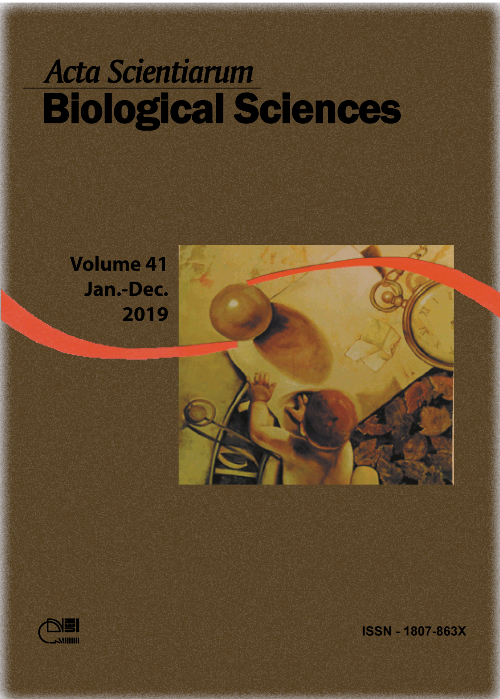Biosurfactant production by <i>Phialemonium</i> sp. using agroindustrial wastes: influence of culture conditions
Resumo
Biosurfactant are surface active compounds with emulsifying capacity and are produced by microorganisms, and they may be affected by factors related to microbial cultivation, such as pH, salinity, incubation time, carbon and nitrogen sources. The aim of this work was to study the influence of the culture conditions on the production of biosurfactants by Phialemonium sp using agroindustrial wastes. The processing parameters of temperature, humidity and pH produced the most significant effects on the production of biosurfactant and emulsifying activity. The maximum concentration of biosurfactant obtained in this study was equivalent to a surface tension reduction of 8.5 mg L-1 surfactin commercial solution using wheat bran, pH of 4.5, and 0.5% of soybean oil added at 30°C. Under these conditions, 83.4 EU g-1 of emulsifying activity, 16.4 g L-1 of emulsifier index and 18.3 U g-1 lipolytic capacity were obtained.
Downloads
DECLARAÇÃO DE ORIGINALIDADE E DIREITOS AUTORAIS
Declaro que o presente artigo é original, não tendo sido submetido à publicação em qualquer outro periódico nacional ou internacional, quer seja em parte ou em sua totalidade.
Os direitos autorais pertencem exclusivamente aos autores. Os direitos de licenciamento utilizados pelo periódico é a licença Creative Commons Attribution 4.0 (CC BY 4.0): são permitidos o compartilhamento (cópia e distribuição do material em qualqer meio ou formato) e adaptação (remix, transformação e criação de material a partir do conteúdo assim licenciado para quaisquer fins, inclusive comerciais.
Recomenda-se a leitura desse link para maiores informações sobre o tema: fornecimento de créditos e referências de forma correta, entre outros detalhes cruciais para uso adequado do material licenciado.












1.png)




3.png)













